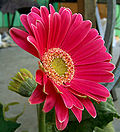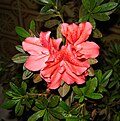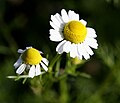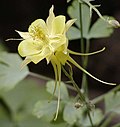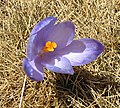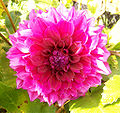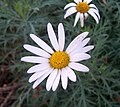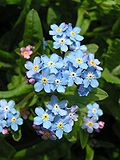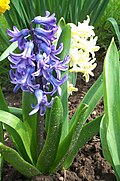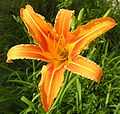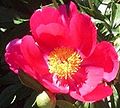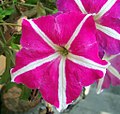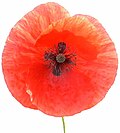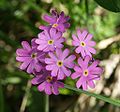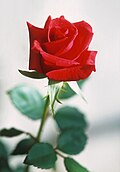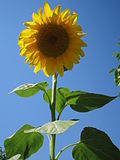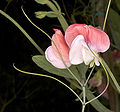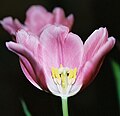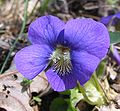Difference between revisions of "AY Honors/Flowers/Answer Key"
From Pathfinder Wiki
m (Reverted edit of 82.36.149.196, changed back to last version by Jomegat) |
|||
| Line 27: | Line 27: | ||
image:Hortensienbluete.jpg|Hydrangea | image:Hortensienbluete.jpg|Hydrangea | ||
Image:Hyacinthus orientalis 2003.jpg|Hyacinth | Image:Hyacinthus orientalis 2003.jpg|Hyacinth | ||
| + | Image:Pinkslipper.jpg|Lady's Slipper | ||
image:Lilla_iris_randers.jpg|Iris | image:Lilla_iris_randers.jpg|Iris | ||
| + | |||
image:Lantana.jpg|Lantana | image:Lantana.jpg|Lantana | ||
| − | |||
Image:Daylily (Hemerocallis fulva) v2.jpg|Lily | Image:Daylily (Hemerocallis fulva) v2.jpg|Lily | ||
Image:Lupinus micranthus.JPG|Lupine | Image:Lupinus micranthus.JPG|Lupine | ||
image:Flor_GDFL_02.JPG|Marigold | image:Flor_GDFL_02.JPG|Marigold | ||
| + | |||
Image:Rorippa nasturtium-aquaticum.jpg|Nasturtium | Image:Rorippa nasturtium-aquaticum.jpg|Nasturtium | ||
| − | |||
image:Orchid.jpg|Orchid | image:Orchid.jpg|Orchid | ||
Image:Pansy aka.jpg|Pansy | Image:Pansy aka.jpg|Pansy | ||
Image:Peony.jpg|Peony | Image:Peony.jpg|Peony | ||
| + | |||
Image:Boa noite.jpg|Periwinkle | Image:Boa noite.jpg|Periwinkle | ||
| − | |||
image:Petunia.jpg|Petunia | image:Petunia.jpg|Petunia | ||
Image:Phlox 'Rosa Spier' 16-08-2005 20.07.20.JPG|Phlox | Image:Phlox 'Rosa Spier' 16-08-2005 20.07.20.JPG|Phlox | ||
Image:Poppy-closeup.jpg|Poppy | Image:Poppy-closeup.jpg|Poppy | ||
| + | |||
Image:Primula farinosa flowers 100704.jpg|Primrose | Image:Primula farinosa flowers 100704.jpg|Primrose | ||
| − | |||
image:Red_rose.jpg|Rose | image:Red_rose.jpg|Rose | ||
Image:Sunflower Taleghan.jpg|Sunflower | Image:Sunflower Taleghan.jpg|Sunflower | ||
Image:Lathyrus odoratus Painted Lady.jpg|Sweet Pea | Image:Lathyrus odoratus Painted Lady.jpg|Sweet Pea | ||
| + | |||
image:Tansy.jpg|Tansy | image:Tansy.jpg|Tansy | ||
| − | |||
image:Tulip01.jpg|Tulip | image:Tulip01.jpg|Tulip | ||
Image:Viola odorata flower - purple with white center - front P.2005.04.04.jpg|Violet | Image:Viola odorata flower - purple with white center - front P.2005.04.04.jpg|Violet | ||
Revision as of 03:00, 16 June 2007
1. Draw or photograph 35 kinds of flowers and identify them correctly.
- Clematis jackmanii 2.jpg
Clematis
2. Draw and properly label, or point out the actual parts of a flower: pistil, stamen, petal, sepal.
http://www.prairiefrontier.com/pages/families/flwrparts.jpg
3. Name six flower families and their distinguishing characteristics. Name at least two flowers in each family.
- Rosaceae
- - Rose Family
- Lily
- monocots and bulbs - usually rather long slender leaves - flowers often showy-parts in threes and sixes- ovary superior.
- Iris
- showy flowersand brightly colored sepals and somewhat fuzzy showy petals-underground rhizome tough and fiberous- leaves somewhat stiff long narrow ovary interior.
4. Describe the life history of a particular flower, including the part played by insects or wind in pollination.
- A seed needs warmth is on light and water to grow roots.
- The flower sprouts up and down at the same time.
- The flowers grow more leaves.
- Bees and other insects pollinate the flowers.
- The flowers form seeds.
- The seeds are dispersed and take root.
- The cycle repeats.
5. Name at least two plants that are poisonous to touch, and state which, if any, are found in your locality.
Poison Ivy, Poison Oak, and Poison Sumac all fall into this category. Poison ivy grows all over North America, and is most fond of disturbed areas such as stream banks and roadsides. Poisin oak grows primarily in Texas, Oklahoma, and the Southeastern and Western United States. Poison Sumac is found in subtropical and warm temperate regions throughout the world, with the highest diversity in southern Africa.
6. Do three of the following:
a. Arrange, draw or photograph a series of at least six flowers showing in order the colors of the rainbow: red, orange, yellow, green, blue, violet.
b. Submit fresh, pressed or dried flowers which have: five petals, four petals, three petals, no petals.
c. Distinguish and name two out of five wild or cultivated flowers by their odor, while blindfolded.
d. List flowers that you have observed being visited for food by the following:
- 1. Birds:
- 2. Honeybees:
- 3. Bumblebees:
- 4. Butterflies:
- 5. Moths:
